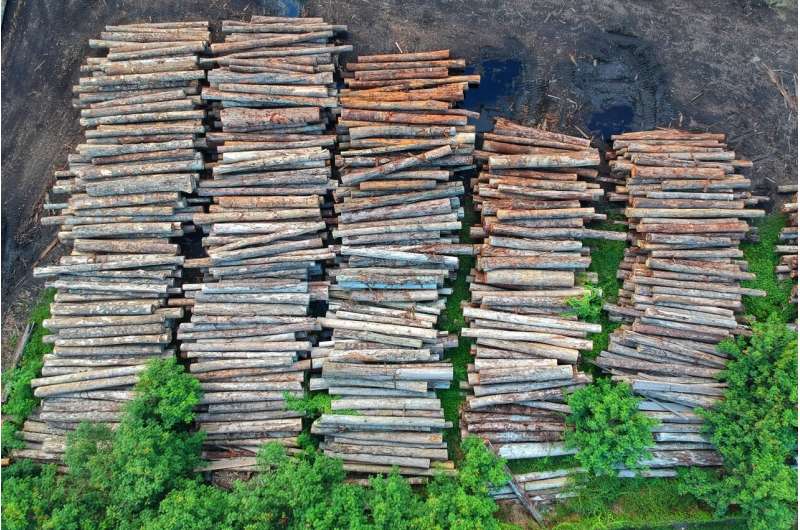This article has been reviewed according to Science X's editorial process and policies. Editors have highlighted the following attributes while ensuring the content's credibility:
fact-checked
trusted source
proofread
Vanishing forests and suffering children: The hidden toll of deforestation in Cambodia

Deforestation, a critical consequence of human activity, has garnered significant attention due to its impact on environmental sustainability, biodiversity and climate change. However, an equally pressing yet less explored aspect is the relationship between deforestation and human health, especially in impoverished regions.
Scientists have increasingly recognized the detrimental effects of deforestation on various aspects of human health, particularly among children. Studies reveal that children residing in areas with high deforestation rates are at an elevated risk of malaria, respiratory illnesses, diarrheal diseases, and malnutrition. This is particularly alarming given that these regions are often home to the most economically disadvantaged populations, worsening existing health disparities.
Despite the growing body of research on the impact of deforestation on child health, there remains a critical gap in understanding how prenatal exposure to deforestation influences early childhood health outcomes.
Cambodia serves as an ideal setting to explore this relationship, given its rapid deforestation rates coupled with prevalent child malnutrition and stunting. Over the past few decades, Cambodia has witnessed a drastic loss of forest cover, totaling millions of hectares.
Concurrently, child stunting and underweight prevalence rates remain alarmingly high, underscoring the urgent need to examine the interplay between deforestation and child health in this context.
A study by Associate Professor Gabriel Fuentes Cordoba from Sophia University, published in the journal Economics and Human Biology, sheds light on this issue, utilizing data from the Cambodian Demographic Health Surveys and combining it with precise forest loss data.
"I find that more persisting outcomes like height and weight are negatively associated with deforestation in critical periods in Cambodia. Also, when exploring the mechanisms, this study shows that the health of a vulnerable population, pregnant individuals, is negatively affected a year after deforestation occurs," explains Dr. Fuentes Cordoba.
By running multiple regression specifications, Dr. Fuentes Cordoba examines critical periods of exposure of deforestation before and after birth, focusing on children under the age of five.
Key health indicators, including birth weight, height-for-age z-scores, and weight-for-age z-scores, are examined to assess the impact of deforestation on child nutrition and growth.
The findings highlight significant associations between deforestation and child health outcomes. Children born in areas with high levels of deforestation in the year before their conception exhibited poorer health outcomes. Also, they were more likely to be shorter for their age, thinner for their height, and had lower birth weights.
Furthermore, the study uncovers a concerning link between prenatal deforestation exposure and maternal health. Pregnant females residing in regions with heightened deforestation rates the year before their pregnancy were more likely to experience anemia, serving as a proxy for malaria infection. This suggests that placental malaria may play a significant role in magnifying child health issues related to deforestation.
"The findings of this study reiterate the need to consider the impact of activities such as deforestation on the most vulnerable populations, especially among children and pregnant females," says Dr. Fuentes Cordoba.
The study advocates for targeted interventions to mitigate malaria infections among pregnant females in deforestation-prone areas, such as scaling up bed net distribution and promoting indoor residual spraying.
"This research shows a negative impact of deforestation on child health. This negative impact may persist into adulthood and affect other aspects of well-being such as education acquisition and even wages. My findings indicate that future research should explore this aspect further," concludes Dr. Fuentes Cordoba.
More information: Gabriel Fuentes Cordoba, Deforestation and child health in Cambodia, Economics & Human Biology (2023). DOI: 10.1016/j.ehb.2023.101343

















